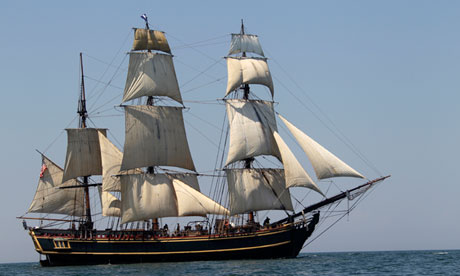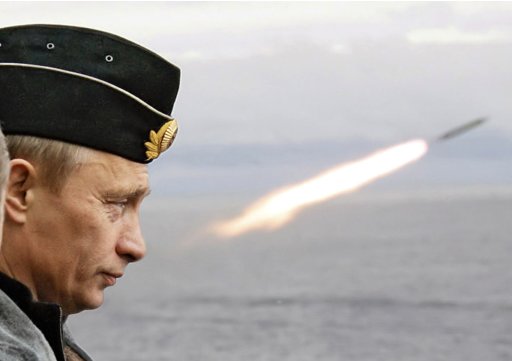Given the current hostilities over in the Middle East (Israel and the Gaza Strip), here are a few of the recently monitored HF Israeli military frequencies.
4XZ Israeli Navy Haifa
2253.0 4XZ: Israeli Navy Haifa ISR 188-110 MPSK proprietary waveform
2680.0 4XZ: Israeli Navy Haifa ISR CW VVV DE 4XZ
4331.0 4XZ: Israeli Navy Haifa ISR CW VVV DE 4XZ
4595.0 4XZ: Israeli Navy Haifa ISR CW VVV DE 4XZ
6379.0 4XZ: Israeli Navy Haifa ISR CW VVV DE 4XZ
6607.0 4XZ: Israeli Navy Haifa ISR CW VVV DE 4XZ
7857.0 4XZ: Israeli Navy Haifa ISR 188-110 MPSK proprietary waveform
7954.0 4XZ: Israeli Navy Haifa ISR 188-110 MPSK proprietary waveform
9390.0 4XZ: Israeli Navy Haifa ISR 188-110 MPSK proprietary waveform
10341.0 4XZ: Israeli Navy Haifa ISR 188-110 MPSK proprietary waveform
11153.0 4XZ: Israeli Navy Haifa ISR 188-110 MPSK proprietary waveform
13514.0 4XZ: Israeli Navy Haifa ISR 188-110 MPSK proprietary waveform
Israeli Air Force (ALE/USB)
3823.0 3865.0 4507.0 4681.0 4700.0 5048.5 5123.0 5129.0 5133.0 5209.0 5269.0 5456.0 5470.0 5478.0 5500.0 5581.0 5662.0 6224.0 6265.0 6288.0 6372.0 6487.0 6631.0 6736.0 6742.0 6840.0 6878.0 6898.0 6921.0 6925.0 6933.0 6992.0 7460.0 7467.0 7630.0 7641.5 7651.0 7778.0 7780.0 7848.0 7950.0 7957.0 7965.0 7967.0 8035.0 8063.0 8100.0 8135.0 8165.0 8234.0 8323.0 8441.0 8521.0 8541.0 8556.0 8622.0 8847.0 8858.0 9135.0 9219.0 9227.0 10614.0 10642.0 11491.0 12143.0 12251.0 13032.0 13291.0 19223.0 19326.0 22850.0 kHz
Israeli Air Force ALE addresses:
035 CH-53-2000 118 Squadron Tel Nof AB, Israel
046 F-16D Block 30 109 Squadron Ramat David AB, Israel
082 Aircraft Unknown Squadron Aircraft
100 F-16A 140 Squadron Nevatim AB, Israel
220 F-15I 69 Squadron Hatserim AB, Israel
227 F-15I 69 Squadron Hatserim AB, Israel
420 KC-130H Kamaf 103/131 Squadron Tel Aviv-Lod AB/Ben Gurion IAP, ISR
427 C-130H Kamaf 103/131 Squadron Tel Aviv-Lod AB/Ben Gurion IAP, ISR
428 C-130H Kamaf 103/131 Squadron Tel Aviv-Lod AB/Ben Gurion IAP, ISR
436 KC-130H Kamaf 103/131 Squadron Tel Aviv-Lod AB/Ben Gurion IAP, ISR
436 KC-130H Kamaf 103/131 Squadron Tel Aviv-Lod AB/Ben Gurion IAP, ISR
619 F-16D 105 Squadron Hatzor AB, Israel
642 F-16D 105 Squadron Hatzor AB, Israel
651 F-16D 105 Squadron Hatzor AB, Israel
667 F-16D 105 Squadron Hatzor AB, Israel
A506 Gnd Stn
AA1 Gnd Stn 103 Squadron (C-130E/K/C-130H) Nevatim AB, ISR
AA2 Gnd Stn
AA3 Gnd Stn
AA4 Gnd Stn
AA5 Gnd Stn
AA6 Gnd Stn
AA7 Gnd Stn
AA8 Gnd Stn
AA9 Gnd Stn
AAA Gnd Stn Air Force Headquarters Tel Aviv, Israel
ACC Gnd Stn Air Force Headquarters Tel Aviv, Israel
ACCES1 Gnd Stn Air Force Headquarters Tel Aviv, Israel
AE2 Gnd Stn Air Force Headquarters Tel Aviv, Israel
AMM Gnd Stn
ARC Gnd Stn
AS5 Gnd Stn Air Force Headquarters Tel Aviv, Israel
B19 Aircraft
B28 Aircraft
B36 Aircraft
B84 Aircraft
BAA Gnd Stn
BB1 Gnd Stn 124 Squadron (UH-60A/S-70A) Palachim AB, Israel
BB2 Gnd Stn 160 Squadron (AH-1E/F) Palachim AB, Israel
BB3 Gnd Stn 161 Squadron (AH-1E/F) Ovda AB, Israel
BB4 Gnd Stn
BB5 Gnd Stn
BB7 Gnd Stn
C14 AH-1F Tsefa C 160 Squadron Palachim AB, Israel
C21 AH-1S Tsefa A 160 Squadron Palachim AB, Israel
C29 Aircraft Aircraft
C35 UH-60A Yanshuf 3 123 Squadron Aircraft
C36 Aircraft Aircraft
C44 AH-64D Saraf 113 Squadron Aircraft
C46 AH-64D Saraf 113 Squadron Hatzerim AB, Israel
C52 AH-64D Saraf 113 Squadron Aircraft
C54 AH-64D Saraf 113 Squadron Aircraft
C62 S-70A Yanshuf 123 Squadron Hatzerim AB, Israel
C79 AH-64D Saraf 113 Squadron Aircraft
C83 Tzukit FTS Hatzerim AB, Israel
DD1 Gnd Stn 103 Squadron (C-130E/K/C-130H) Tel Aviv-Lod AB/Ben Gurion IAP, ISR
DD2 Gnd Stn 131 Squadron (C-130E/K/C-130H) Tel Aviv-Lod AB/Ben Gurion IAP, ISR
DD3 Gnd Stn
DD6 Gnd Stn
DD7 Gnd Stn
DD8 Gnd Stn
DDD Gnd Stn
E69 Aircraft
GB2 Gnd Stn 131 Squadron (C-130E/K/C-130H) Tel Aviv-Lod AB/Ben Gurion IAP, ISR
GT4 Gnd Stn 131 Squadron (C-130E/K/C-130H) Tel Aviv-Lod AB/Ben Gurion IAP, ISR
GT6 Gnd Stn 131 Squadron (C-130E/K/C-130H) Tel Aviv-Lod AB/Ben Gurion IAP, ISR
K20 KC-130H Kamaf 103/131 Squadron Tel Aviv-Lod AB/Ben Gurion IAP, ISR
K22 KC-130H Kamaf 103/131 Squadron Tel Aviv-Lod AB/Ben Gurion IAP, ISR
K27 C-130H Kamaf 103/131 Squadron Tel Aviv-Lod AB/Ben Gurion IAP, ISR
K28 C-130H Kamaf 103/131 Squadron Tel Aviv-Lod AB/Ben Gurion IAP, ISR
K35 C-130H Karnaf 103/131 Squadron Tel Aviv-Lod AB/Ben Gurion IAP, ISR
K36 KC-130H Kamaf 103/131 Squadron Tel Aviv-Lod AB/Ben Gurion IAP, ISR
K45 KC-130H Kamaf 103/131 Squadron Tel Aviv-Lod AB/Ben Gurion IAP, ISR
KH1 Gnd Stn
KN1 Gnd Stn
M46 Boeing B-707 (Phalcon) 120 Squadron Tel Aviv-Lod AB/Ben Gurion IAP, ISR
M48 Boeing B-707 (EC-707 Re'em) 120 Squadron Tel Aviv-Lod AB/Ben Gurion IAP, ISR
M60 Boeing B-707 (EC-707 Re'em) 120 Squadron Tel Aviv-Lod AB/Ben Gurion IAP, ISR
M64 Boeing B-707 (EC-707 Re'em) 120 Squadron Tel Aviv-Lod AB/Ben Gurion IAP, ISR
M72 Boeing B-707 (EC-707 Re'em) 120 Squadron Tel Aviv-Lod AB/Ben Gurion IAP, ISR
M75 Boeing B-707 (EC-707 Re'em) 120 Squadron Tel Aviv-Lod AB/Ben Gurion IAP, ISR
MN1 Gnd Stn
NAK Gnd Stn
NT1 Gnd Stn
NT2 Gnd Stn
O13 Gnd Stn
R10 Aircraft
R17 Aircraft
R27 Aircraft
R67 Aircraft
RAM Gnd Stn Ramat David AB, Israel
S15 Aircraft
S19 Aircraft
S27 Aircraft
S30 Aircraft
S45 Aircraft
S53 Aircraft
SA3 Gnd Stn
T22 Aircraft
T26 Aircraft
TKM Gnd Stn
TS1 Gnd Stn
TS2 Gnd Stn
TS3 Gnd Stn
TSM Gnd Stn
TSR Gnd Stn
TYS Gnd Stn
W68 Aircraft
W69 Aircraft
W72 Aircraft
XT9 Gnd Stn
XXX Gnd Stn
Y12 Aircraft
Y14 Aircraft
Y20 Aircraft
Y22 Aircraft
Y36 Aircraft
Y37 Aircraft
Y45 Aircraft
Y50 Aircraft
Y80 Aircraft
YN1 Gnd Stn
YN2 Gnd Stn
ZM6 Gnd Stn
I will add to this frequency list as new frequencis are monitored. Any updates, corrections, and additions are always appreciated. Sent email to the address in the masthead.




















